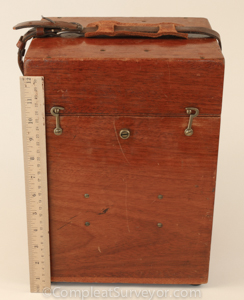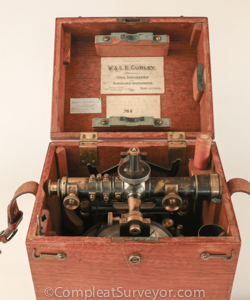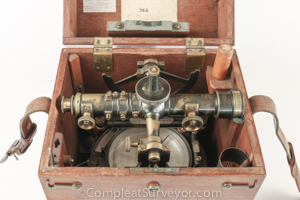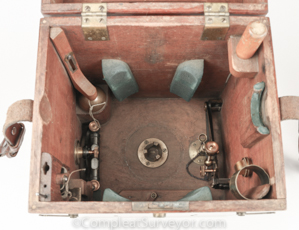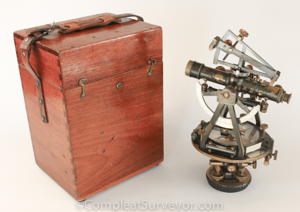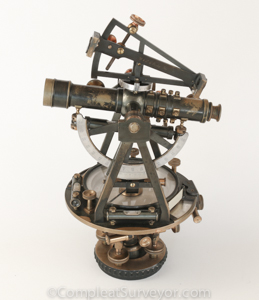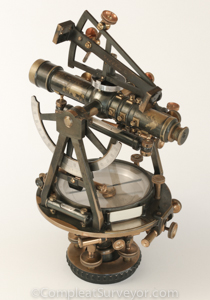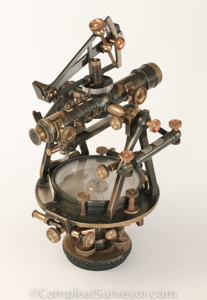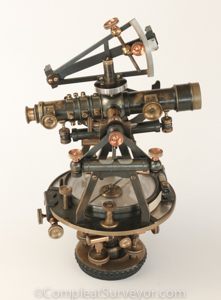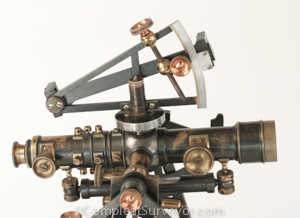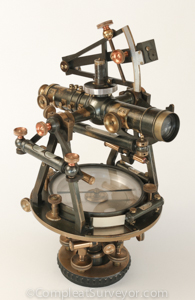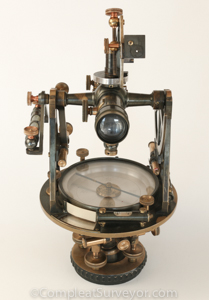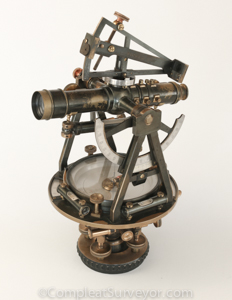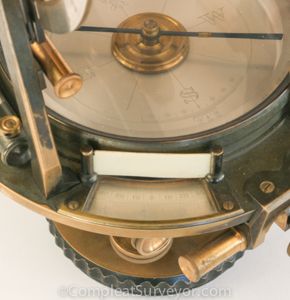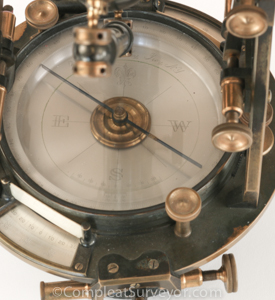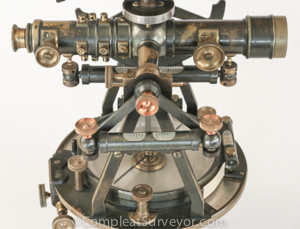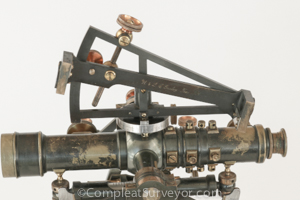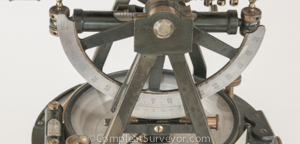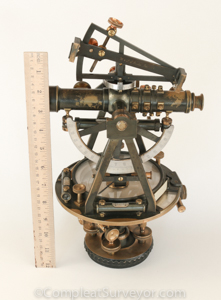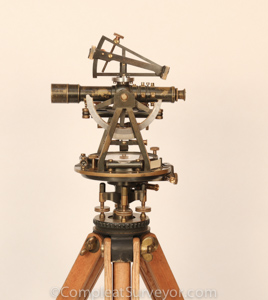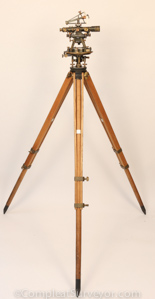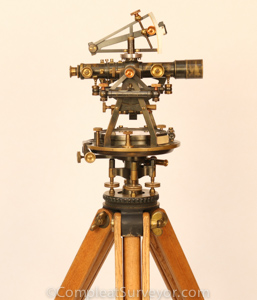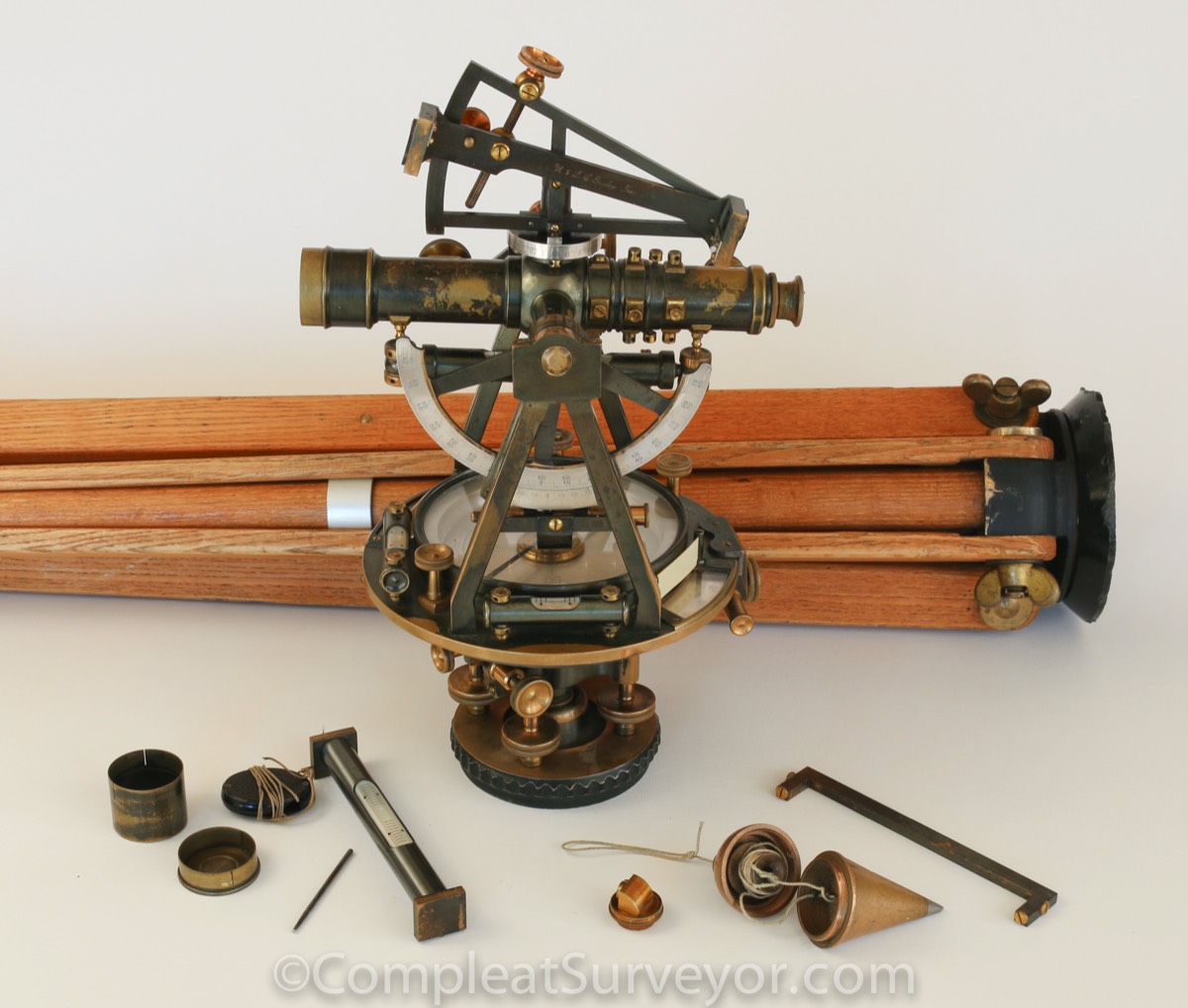
Gurley Burt Solar Transit - Circa 1907
Very Nice Light Mountain Solar Transit with a Loaded Box
360 Degree Spinner View
The Gurley Light Mountain Solar Transit offered here is a wonderful example of one of the most important surveying instruments ever made for public land surveys. Having looked thru a great number of General Land Office field notes for the public land states, I estimate that US Deputy Surveyors and Mineral Surveyors used a Gurley Light Mountain solar transit in approximately 40% of the public land and mineral surveys from 1880 thru 1910. That's just sheer marketplace domination when you consider all of the different solar compasses and solar transits made by instrument makers.
William Schmolz in San Francisco patented the idea of putting a Burt solar until on a transit, and then sold the rights to the patent to Gurley in the early 1870s. Gurley then had the exclusive ability to manufactures and sell solar transits. Shortly thereafter, in 1876 Gurley created the Gurley the Light Mountain Transit as a light-weight alternative to Gurley's more robust Engineer's and Surveyor's transit. Putting the Burt solar unit on top of a light mountain transit combined light weight with GLO mandated accuracy, and was a match made in heaven. Gurley production records indicate that sales of light mountain solar transits exceeded sales of all other Gurley solar transits by a 4 to 1 margin form 1875 to 1885.
Gurley owned the solar transit market for years, until other approaches (Saegmuller solar attachments, Smith solar attachments, etc) to making solar observations were developed by other makers. (See a 1901 History of Solar Instruments here). Gurley still dominated the market for solar transits even after competitive approaches hit the market - Gurley's head start in making solar transits proved insurmountable although competitors like Young & Sons and Buff and Buff chipped away at Gurley's huge marketshare year after year. Gurley's domination of the solar transit market came to an end in 1910 or so, when the GLO terminated hiring surveyors on a contract basis and hired them instead as employees. Starting around 1910, the GLO started buying solar instruments to outfit all of its newly hired surveyors from Young & Sons, and a few years later from Buff & Buff. The GLO purchased very few solar transits form Gurley after 1910 (although it did purchase some Gurley Explorer's Solar Transits for use in Alaska).
The Gurley Light Mountain transit offered here was likely made in 1907 or so, and reflects all of the little developments that Gurley evolved over the years to perfect its extremely successful solar transit. The 1907 date is based on a label on the box lid (see pics below). The label reflects a Seattle Branch office for Gurley - which Gurley opened up around 1907 or 1908. Gurley also started putting serial numbers of instruments in 1908. This instrument does not have a serial number. Thus, it's seems pretty straightforward to date this instrument in the 1907 time frame — after Gurley opened the Seattle Branch office and before Gurley started putting serial numbers on instruments.
Gurley's Light Mountain Solar Transits did not change after 1905 or so. I love the color pic below, which is found in a colorized version of the 1910 Gurley Instrument Manual.
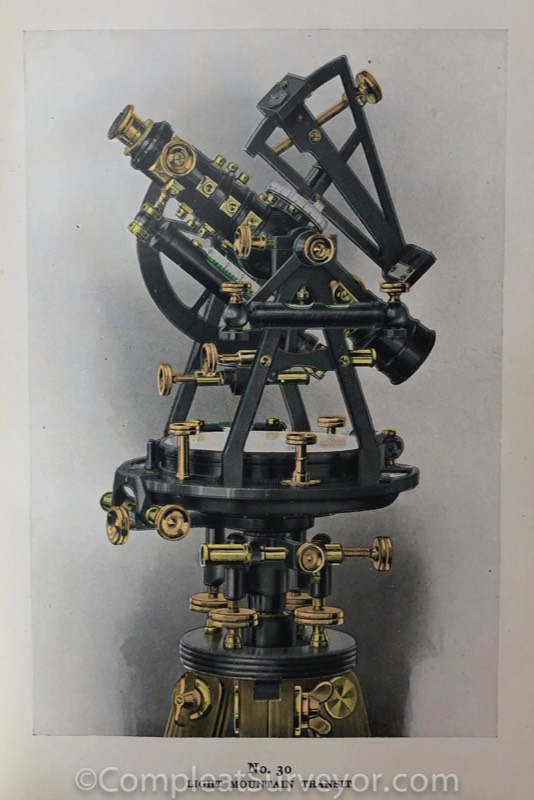
Gurley Solar Transits come up for sale occasionally. Unlike many of those instruments, the solar transit offered for sale here is (1) in great condition and (2) has a box full of small parts and accessories.
This is perhaps the smoothest working vintage instrument I have come across since restarting The Compleat Surveyor. The instruments turns wonderfully with no rub or friction. And the optics are crystal clear and sharp, with very strong crosshairs and stadia lines. I attribute the condition of the transit to two things. First, the solar transit was sold right before the GLO put many contract surveyors out of work in 1910, and I suspect this transit was not used much after 1910. The condition of the instrument and box both suggest minimal use. Second, a label in the box indicates that the transit was serviced in 1970. I bet this transit was put in perfect working order in 1970, and then was used very little if at all. Whatever the reasons, this instruments is a joy to use and probably functions exactly as it did when new.
When I first opened the solar transit box I was delighted to see so many of the small parts that are normally lacking now. The transit itself is a 1907 Gurley Light Solar Mountain Transit Model 30, as described in the 1907 Gurley Instrument Manual here (4 pages). The Model 30 comes with the Gurley Patented Latitude Level , and cost $245 as shown below.
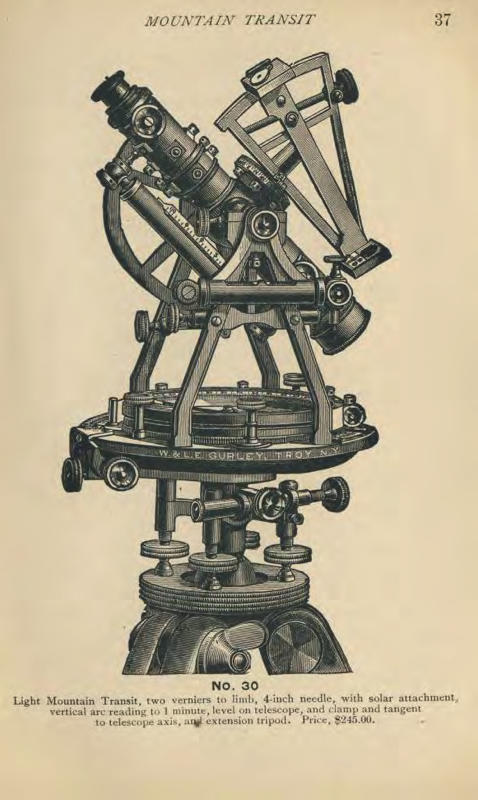
The box includes a lot of small items that are generally lacking after the passage of more than 100 years. The Gurley Solar Transit offered here includes a prism eyepiece, an $8 extra that attaches to the side of the box. Also included is a neat wind-up plumb bob, a $2.50 extra that has a nifty partial enclosure in the box so the bob won't move around.
The box also includes the adjustment bars for the solar apparatus, a magnifying glass, and a sun shade.
The solar transit also comes with its original adjustable tripod.
The Gurley Light Mountain Solar Transit offered here is a wonderful example of a very important instrument. This solar transit is perfect for display. The instrument is also perfect for a hands-on display, with great optics and a very smooth operating ability.
SOLD - Email Russ
© 2020 Russ Uzes/Contact Me
